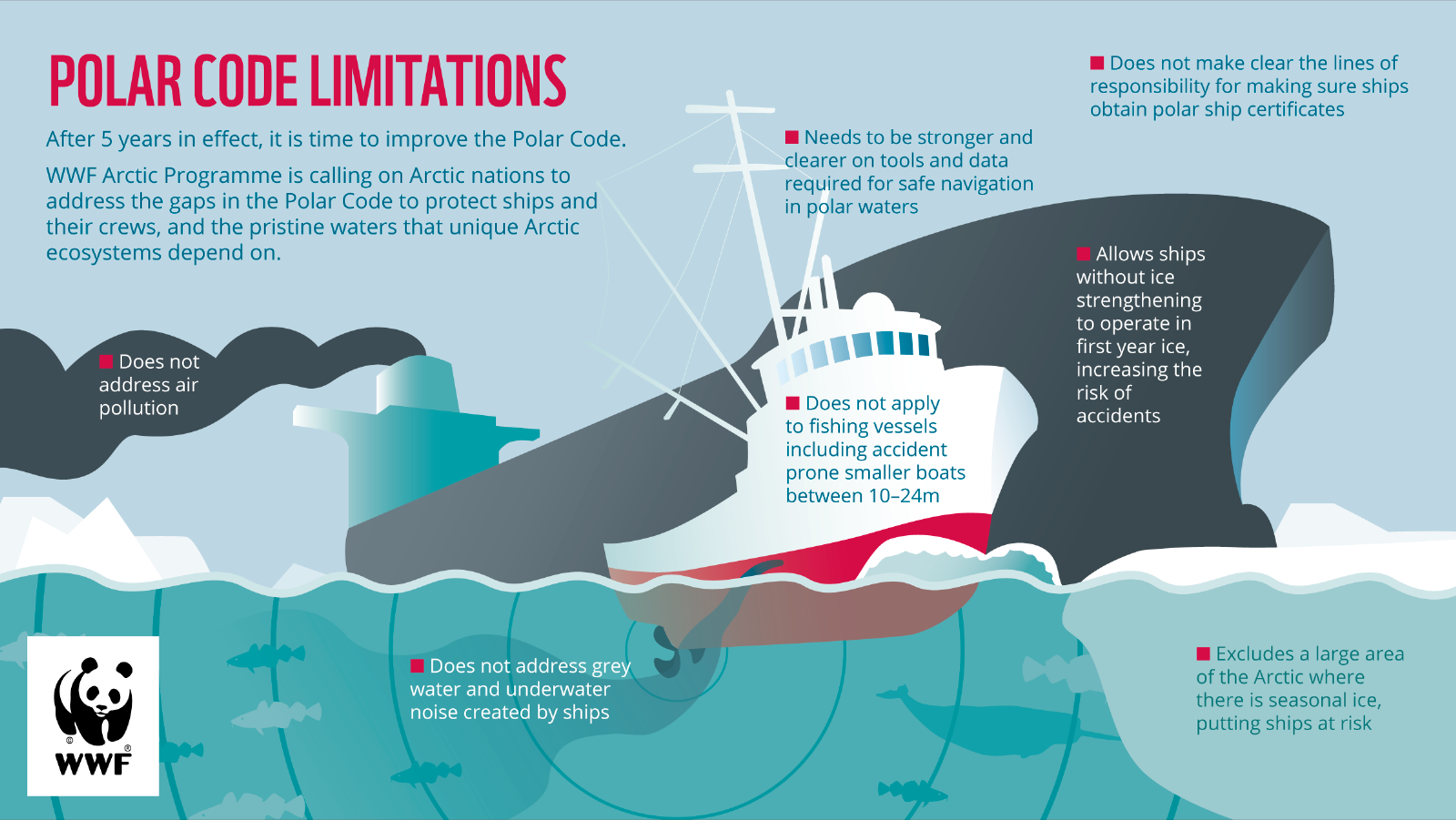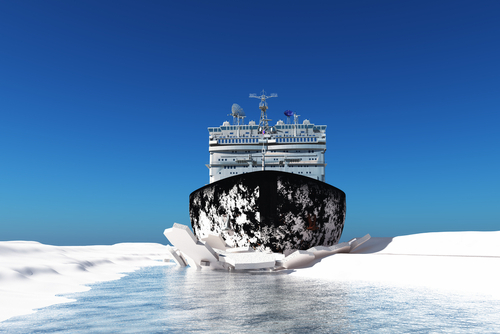During 2021, WWF’s Arctic Programme made review to identify gaps and challenges in implementing the Polar Code. It revealed that the code does not go far enough in preventing accidents or pollution that could have catastrophic consequences for marine life in Arctic waters.
Ensuring ships can withstand the harsh conditions of Arctic waters
According to WWF, the code categorizes vessels according to their ability to withstand sea ice. Category A and B ships must have hulls that are strong enough to deal with more challenging ice conditions. While Category C includes a wide range of ships, if such a ship encounters thicker ice along its route, it could end up being stranded, having its hull penetrated, or sink altogether.
Providing crews with the tools and data they need to stay safe
WWF adds that the code also falls short when it comes to ensuring that crews have the training, tools and information they need to safely navigate ice-covered waters.
Many vessels don’t have navigational experts with the local knowledge needed to operate in the Arctic
[smlsubform prepend=”GET THE SAFETY4SEA IN YOUR INBOX!” showname=false emailtxt=”” emailholder=”Enter your email address” showsubmit=true submittxt=”Submit” jsthanks=false thankyou=”Thank you for subscribing to our mailing list”]
As sea ice decreases, ships are often travelling through corridors where vessels have not been before, and for which there may be limited hydrographic information.
 For this reason, the code needs to be amended to require ship’s masters to access the most up to date data available so they can avoid encountering uncharted hazards.
For this reason, the code needs to be amended to require ship’s masters to access the most up to date data available so they can avoid encountering uncharted hazards.
Increasing the area covered by the Polar Code
The IMO’s definition of “Arctic waters” is also more restrictive than the Arctic Council’s definition, says WWF, explaining that the current boundary refers only to waters which can be covered by ice.
This means that the Polar Code does not apply to a large area of the Arctic where seasonal ice, including ice floes and chunks of ice can be present
Finally, another issue with the Polar Code is that it does not clearly set out who is responsible for ensuring that ships obtain polar ship certificates. All ships operating in the Arctic must get one, but it is generally delegated to an administration’s recognized organisation (RO) to ensure this happens.
These organizations don’t necessarily know which ships require a polar ship certificate, so it is ultimately up to the shipowner themselves to ensure this requirement is met, leaving the system vulnerable to potential loopholes































































